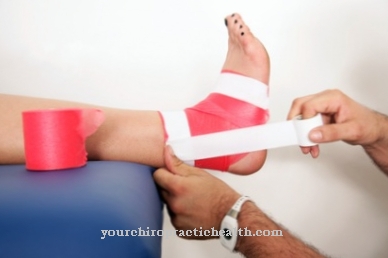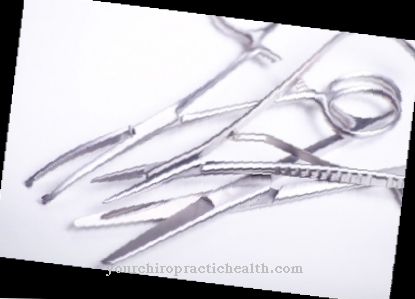Individual teeth are isolated from others with the rubber dam. As it were, a cloth lies over the oral cavity through which only the tooth or teeth to be treated emerge. This protects the corresponding tooth from undesirable influences. The rubber dam must be with you Rubber dam clamps that fix it in place.
What are rubber dam clamps?

The teeth are shielded with the rubber dam so that saliva and bacteria no longer interfere with the treatment. The patient is also protected, because the inhalation or swallowing of harmful residues is prevented.
The tooth concerned must be as dry as possible during the treatment. In the case of a root canal treatment, the root canal must also be protected. Otherwise bacteria could penetrate and cause inflammation.
Rubber dams are similar to a tension rubber that is stretched in front of healthy teeth with the help of rubber dam clamps. The teeth to be treated are thus exposed. This method was developed in 1864 by a New York dentist. After further developments in dental aids, the enormous importance of rubber dams decreased, but today many dentists still appreciate the benefits of the rubber dam and the rubber dam clamps.
Shapes, types & types
Rubber dam clamps have proven themselves many times; They do a good job in root canal treatments, fillings and when amalgam has to be removed. A rubber dam is also recommended for teeth whitening, and if adhesive fillings are necessary, they also protect the teeth.
Rubber dam clamps on the rubber dam also prevent the root canal from coming into contact with pathogens. The gums must also be protected, especially if a whitening is done. Because caustic substances are used for this, which must not touch the gums under any circumstances.
The rubber dam is usually made of latex. However, since this can cause allergies, a rubber band was specially developed for allergy sufferers that is tolerated by everyone.
The rubber dam is attached to rubber dam clamps. As an alternative to these brackets, threads, dental floss or interdental wedges can also be used. The dentist needs accessories, punch pliers and clamp pliers are necessary. A stenter frame is also necessary so that the elastic band is stretched in front of the patient's mouth. There are now ergonomic cofferdams that have a knob-like design. This eliminates the need to mark and punch out the holes.
In some models, plastic rings are integrated, which make the clamps superfluous. There are also systems that are already perforated and basically save the dentist any preparation.
Structure & functionality
Rubber dam systems work very simply. The tooth to be treated must be kept dry, this offers good protection against saliva and moisture from the breath. Vacuuming dry then no longer has to take place.
Corrosive substances are often used during dental treatment and there can also be substances in medicines that are harmful to the patient's health. The rubber dam only exposes the teeth that require treatment. The rest of the mouth is covered. This means that nothing can penetrate the oral cavity or the respiratory tract and no objects are swallowed. This can happen quickly and amalgam residues or residues from the tooth can get into the esophagus.
The clamping frame is stretched in front of the mouth and practically nothing can land in the mouth that does not belong there. Then a rubber is placed over the teeth that are not to be treated and secured with rubber dam clamps. The teeth to be treated protrude from the punched holes. Sometimes the gums also have to be treated; in the case of inflammation of the gums, the tooth can be separated from the gum.
Even with rubber dam systems, the mouth must be kept open at all times, but the patient can continue to swallow during treatment.
You can find your medication here
➔ Toothache medicationMedical & health benefits
In addition to its advantages, the rubber dam also has disadvantages. The advantages are obvious, because when a rubber dam is stretched, the dentist no longer has to concentrate on suctioning. The mouth remains open, but the oral cavity is protected. However, the rubber dam clamps can easily lead to ulcers in the gums because the clamps are under tremendous pressure. If the gums are pushed back a lot, it can also lead to an unwanted reaction of the gums. In this way, areas on the tooth that were previously invisible are made visible, but the use can cause inflammation of the gums.
The rubber dam is not to be used at all in the case of epilepsy, asthma or respiratory diseases. Particular caution is required even if anxiety disorders are present. A responsible dentist will take this into account.

























.jpg)


